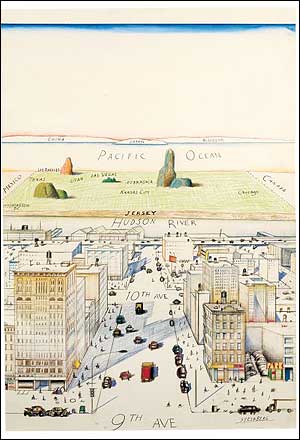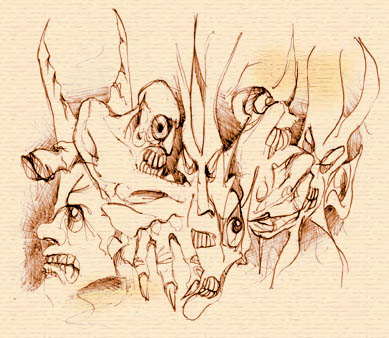Serendip is an independent site partnering with faculty at multiple colleges and universities around the world. Happy exploring!
Notes Towards Day 2: Genres as Fields of Knowledge, in Motion....

![]()
Readings for today:
Wai Chee Dimock, "Introduction: Genres as Fields of Knowledge."
Stephen Owen, "Genres in Motion." Special Topic: Remapping Genre. PMLA 122, 5 (October 2007): 1377-1393.
Readings for next Tuesday from same special issue:
Ed Folsom, "Database as Genre: The Epic Transformation of Archives" and Responses to Ed Folsom: Jonathan Freedman, N. Katherine Hayles, Jerome McGann, Meredith L. McGill, and Peter Stallybrass. Reply by Ed Folsom. 1571-1612; along w/ Bruce Robbins, Afterword, 1644-1651.
I. course-keeping
on Tuesday: ran out of time reviewing the logistics of
how we're going to work together this semester
instructions for weekly postings
how'd it go?
my expectations
other questions/concerns/thoughts/responses re: any of this?
sign in sheet: your on-line name, please
history of this course:
10 years ago, Paul Grobstein and I designed a CSem,
"Storytelling as Inquiry"
several years later, we came up w/ a more discipline-specific conversation, 200-level Eng/Bio class: "The Story of Evolution and The Evolution of Stories"
This class on genre is stage 3 in that process of asking
where story forms come from, how they evolve.
Originally conceived as offering a theoretical framework for literature majors, a way of reading/learning about "uptakes,"
particularly useful for senior theses, etc:
"How do you take a parody, if you've never met a parody or the genre that it spoofs?" (consider Jonathan Swift's 1729 essay, "A Modest Proposal")
But when I piloted the course two years ago I had lots of science majors, realized how useful it might be for everyone to think about how categories are made,
how they frame what we see/understand;
how not understanding the frame can lead to misunderstandings.
(Very interested generally in how science/art
intersect/inform each other:
how those different forms of knowing are
like/different from one another.)
II. Want to adjust this course/this time to who's here;
so go 'round: naming yourself,
what kind of "genre" of student you are (=major)
and also your favored cultural "genre"/kind.
III. reading for today: two essays from the archetypal/
prototypical journal of the profession of literary studies--
Publication of Modern Language Association
start by thinking about the genre of the academic essay:
what are its generic characteristics?
how do you know you are reading one?
what is the "uptake"? how does it signal to you
how to read it? what are the clues?
do these two essays fit this genre?
what are their characteristics?
do they do any genre-bending?
(my intention that we do some of that in our own essays-->
using images, posting on-line, to a larger audience;
not assuming a captive audience, but using images,
other methods of trying to reel them in).
rmeyers, liquid and organized: What struck me was that both readings, though arriving at their destinations by completely different routes (one through the digital age, one through ancient history), managed to depit genre as something fluid from the very begining --no matter what human beings attempt to mold it into....Maybe...genre is not a word for the way the world is, but a word for how we think about the world?
In the second essay, Owen mentions,
as one of the pleasures of working in different traditions,
"seeing the conceptual universe put together differently,
foregrounding 1 set of distinctions rather than another;
aggregating concepts seen as distinct elsewhere."
Let's play w/ this possibility.
![]()
Michael Foucault begins his Preface to The Order of Things: An Archaeology of the Human Sciences (Les Mots et les choses)
with a meditation on the constructedness of categories:
This book first arose out of a passage in Borges, out of the laughter that shattered, as I read the passage, all the familiar landmarks of thought—our thought, the thought that bears the stamp of our age and our geography—breaking up all the ordered surfaces and all the planes with which we are accustomed to tame the wild profusion of existing things and continuing long afterwards to disturb and threaten with collapse our age-old definitions between the Same and the Other.
Jorge Luis Borges describes "a certain Chinese encyclopedia," the Celestial Emporium of Benevolent Knowledge, in which it is written that animals are divided into:
- those that belong to the Emperor,
- embalmed ones,
- those that are trained,
- suckling pigs,
- mermaids,
- fabulous ones,
- stray dogs,
- those included in the present classification,
- those that tremble as if they were mad,
- innumerable ones,
- those drawn with a very fine camelhair brush,
- others,
- those that have just broken a flower vase,
- those that from a long way off look like flies.
In pairs: can you come up with an order for these?
The central argument of Foucault's Order of Things is the idea of the "administrative control" that results from the ability to identify "kinds."
IV. Let's look a little more @ our own inclinations in this direction, starting (again w/ ourselves).
In the first essay, Dimock talks about the rise of digitalization as a particularly strong, contemporary example of the way in which
all genres are "liquified":
"empirical, not logical,"
"all open sets, continually confronted with new specimens."
"Every genre is virtual":
"not yet realized, emerging,"
with an "ephemeral horizon of expectations."
(very different from Derrida's "law of genre," as normalizing...)
Dimock has a particular interest in the "liquid form" known as world literature, or what happens when a text is "present within a literary system beyond its original culture"; and she asks that we balance the archetypal value of literary studies--that of "originality, with the art of receiving."
After meditating for a while on such "kinship networks,"
the "fluid continuum" of literature, Dimock asks,
"what would students learn if literature
were taught under this rubric?"
...not segregated by periods or by nations, but
...featuring long backgrounds and minute evidence
...pre-national pasts, transnational geographies
...if all genres ramify into numerous collateral species:
what would the world map look like?
Make a map of what you have read so far:
* list the last two years' worth literature courses you've taken:
* what cross-currents have you sailed,
between Europe, Asia, Africa, North and South America?
* what texts have you read?
![]()
![]()
Locate these texts on a U.S./world map:
what's this look like, empirically?
What's the evidence?
What are the patterns?
Why have you studied what you have studied?
How does your experience intersect w/ Dimock's argument that
literary studies should be more fluid in its taxonomies,
w/ less emphasis on divisions of knowlege, more on kinships,
observing meandering paths of body of material?
This is an empirical discipline, she says, and
should be freer of overreliance on default boundaries...
not even strictly language-based:
popular forms, part of larger kinship network,
muddy temporal, spatial, generic lines.
Look @ course lists in on-line dept'l catalogue;
work together to place them on the world map:
what have you come up w/?
Try to imagine a different literary map,
of the world as you should be learning about it:
from your own perspective?
from that of a mappa mundi?
how located/local? how global/unimagined might it be?






Comments
Post new comment